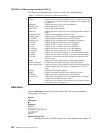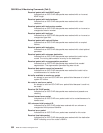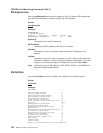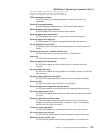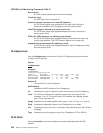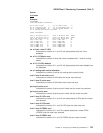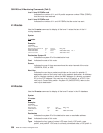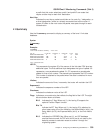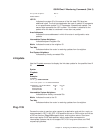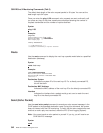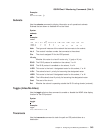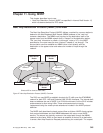
level 1/level 2 PSNPs rcvd
Indicates the number of L1 and L2 partial sequence number PDUs (PSNPs)
that the router has received.
level 1/level 2 PSNPs sent
Indicates the number of L1 and L2 PSNPs that the router has sent.
L1-Routes
Use the l1-routes command to display all the level 1 routes that are in the L1
routing database.
Syntax:
l1-routes
Example:
l1-routes
Level 1 Routes
Destination System ID Cost Source Next Hop
0000-9300-0047 0 LOCArea *
AA00-0400-080C 1 ESIS AA00-0400-0C04, Ifc 7
7777-7777-7777 0 ISIS 3455-6537-2215
Destination System ID
Indicates the system ID of the destination host.
Cost Indicates the cost of this route.
Source
Indicates the one of three sources where the router learned of the route:
LOCAREA, ESIS, or ISIS.
Next Hop
Indicates the next hop a packet would take on its route. An asterisk (*)
designation refers to the router itself as the packet’s destination. An address
with an interface number is either the MAC address of a directly connected
ES, or the DTE address if the next hop is an X.25 switch, or a DLCI if the
next hop is Frame Relay switch. A system ID (34555372215) refers to the
next hop to destination.
L2-Routes
Use the l2-routes command to display all the level 2 routes in the L2 database.
Syntax:
l2-routes
Example:
l2-routes
Level 2 Routes
Destination Cost Type Next Hop
4700-0500-01 0 LOC-AREA *
4900-02 20 AREA 0000-9310-04C9
Destination
Indicates the system ID of the destination area or reachable address.
Cost Indicates the cost of this route.
Type Indicates the four types of routes: LOC-area (local), LOC-prefix, area,
prefix/I, and prefix/E. LOC-area is a directly connected area; a LOC-prefix is
OSI/DECnet V Monitoring Commands (Talk 5)
338
MRS V3.2 Protocol Config Ref Vol 2



